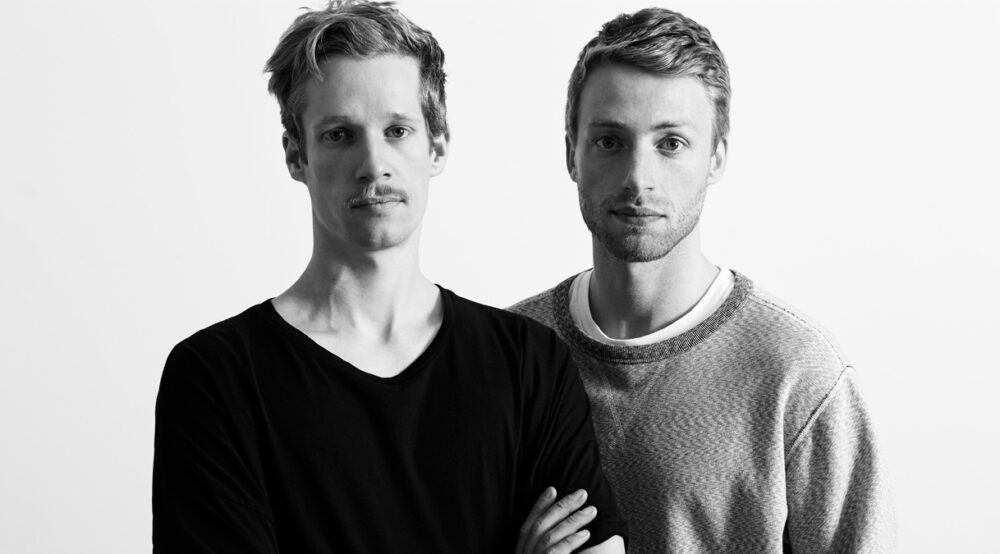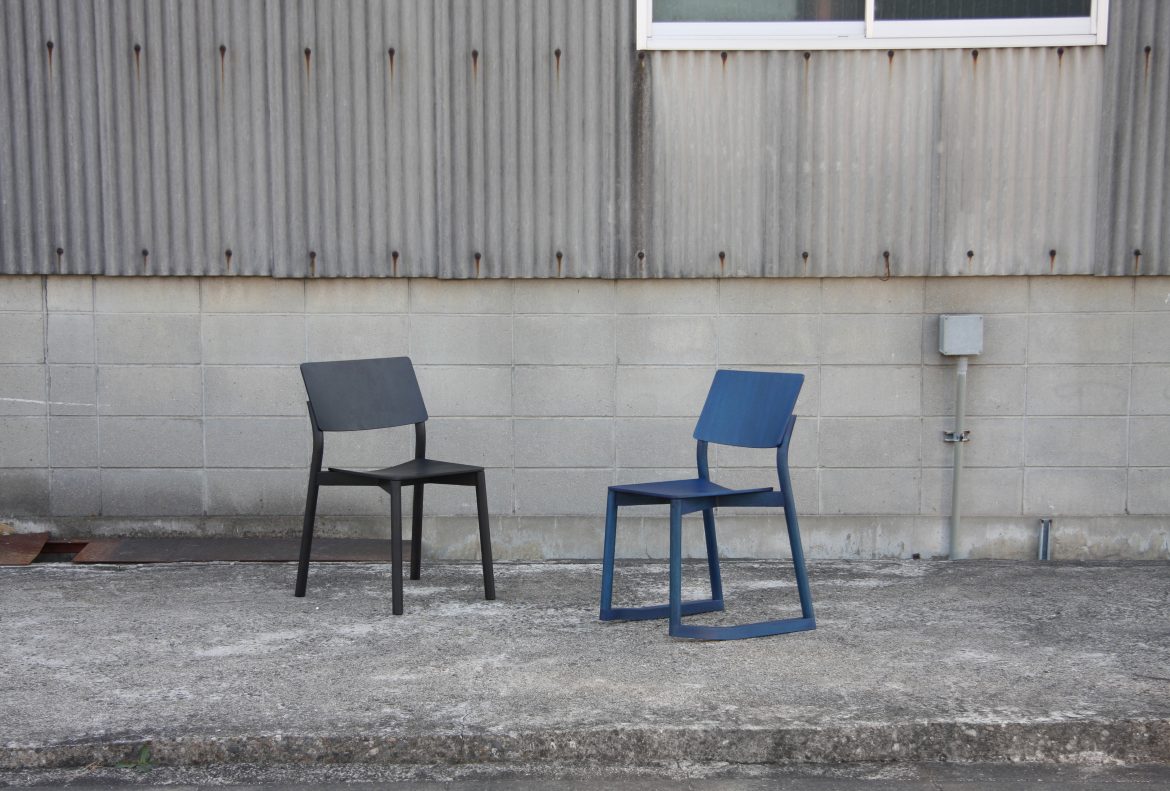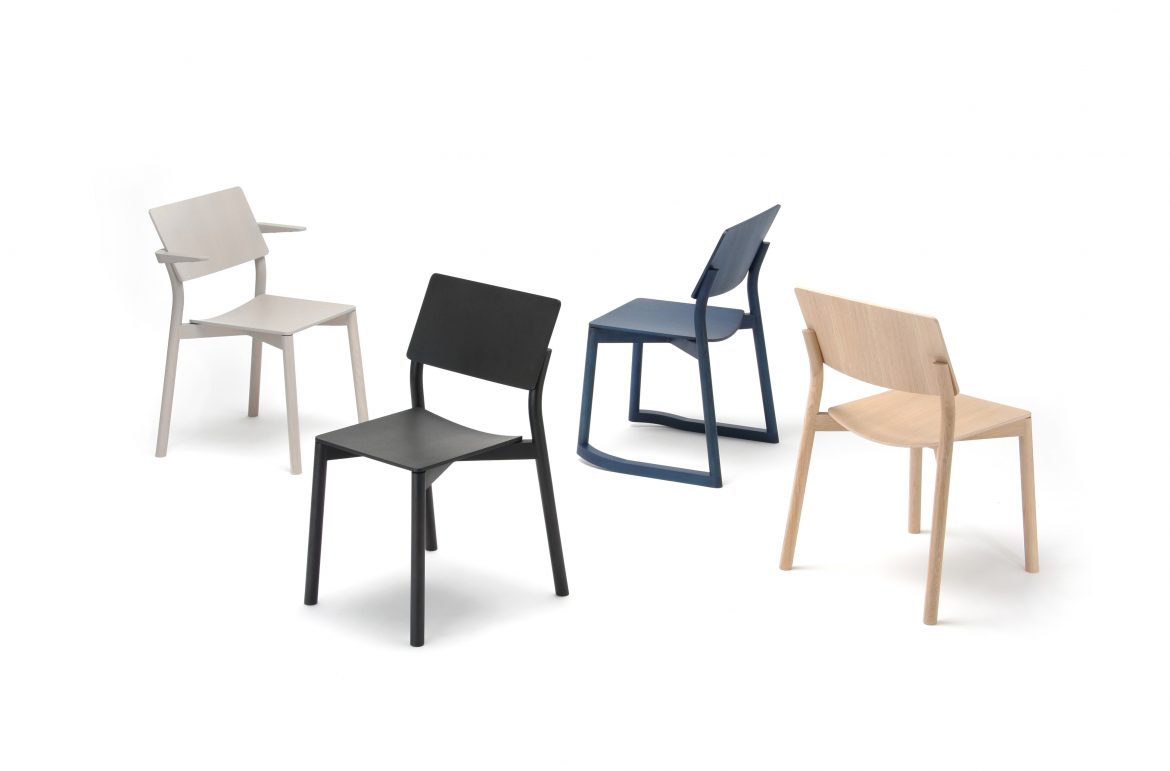
Q&A GECKELER MICHELS, DESIGNERS OF THE PANORAMA CHAIR FOR KARIMOKU NEW STANDARD
Frank and David, you designed a new chair for Karimoku New Standard which will be presented at Salone del Mobile this April. Can you describe the chair, please. What is so special about it?
When Karimoku New Standard asked us to do a chair that should cover all needs of a classic contract chair family, it was clear that there were many restricting parameters to work with. With these parameters in mind, we unavoidably ended up with a design that naturally refers to archetypes of stacking and task chairs made of wood. Our take on this was to work out something that reflects our vision of proportions, the interplay of soft and hard lines. Most of all, we wanted to highlight the dialogue between the two different surface ratios from seat and back shells, reminiscent of paper sheets with a soft twist. The wide backrest was therefore giving the impulse for the name ‘Panorama’. Even though it looks minimalistic, the chair surprises with comfort and practicability in any imaginable situation, and all versions can be stacked with each other across versions – an ideal contract chair. Typically you have a curvature on the top end of the backrest, instead we turned it upside down. Not only we arrived at a backrest which seems to ‘fall back’ and is reminiscent of a cursive character when looking at the side silhouette, but also a fully straight edge on the top end of the back rest – this results in a slim look when the chair is closely standing at the table which is good for compact dining table set-ups, a rare detail in chair design.
Panorma is thus a chair family, in which also the different versions can be stacked among each other?
Exactly, since the very start of the development process, the Panorama chair was developed as a chair family, integrating extra features such as stacking, an armrest version which also enables the suspension on tables, as well as a version with runners with a forward tilting momentum for active environments. The Panorama chair on runners as a derivative of the basic 4-leg version, is inspired by a typical, vernacular chair design from Japan. These archetypes were then adopted to suit a stackable chair construction, implemented with Karimoku New Standard‘s latest wood crafting techniques, thus giving it a unique look in detailing.
You worked with the material wood. Is that a new material for you? What are the challenges when designing a wooden chair?
Generally, we have experience with wooden chairs and plywood shells but every project has its own specific challenges. Working with Karimoku New Standard also set a new standard to our understanding of accurate wood processing and how Japanese manufacturing gets accompanied by modern CNC techniques is a pleasure to experience as a designer – and of course as a user.
Would you describe the chair as specifically Japanese? Did you try to meet the design aesthetic of Karimoku New Standard when designing this chair? How does it fit with the brand?
Obviously, PANORAMA has formal references to Japanese aesthetics which celebrates calmness and clean compositions. But the design language is a compromise of meeting halfway, as Karimoku New Standard strives to undertake cooperations with mostly European designers in order to bring the designers own individual identity in the realm of Japanese design. We think that we have achieved that. Additionally, the chair should blend into the existing collection, while being able to stand alone as a single piece.
In what interior do you see this chair?
The PANORAMA collection is based on a very universal and versatile chair design, so we think they can fit in anywhere. But the warmth of the wood speaks for a usage in the hospitality sector such as restaurants, and the preciseness, solidity and high quality craftsmenship will be appealing to design connoisseurs.
If you were to describe yourself as a design studio, what would you say is special about you? What do you think you distinguish yourself from others?
Design to us is besides the technical challenge a highly emotionally driven profession. In case of briefing-based developmens, we are happy to work with clients that trust in our visions even before we articulate them. Executing and properly engineering products that had been initially only a vague feeling is what we can do best. A difference towards our lone colleagues is that we are a duo, we can share and split up our competences to bring the best into a project, this also results in a reliable service towards our partners and brings fun and fruitful exchange into all GM projects.


